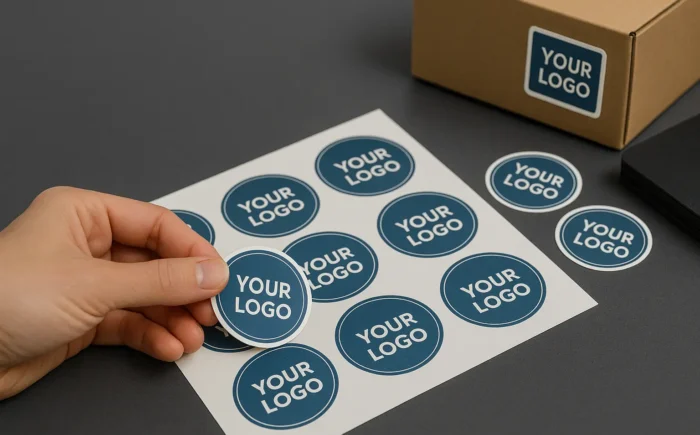
When you’re designing a vinyl sticker with a dark background — deep blue, burgundy, graphite, forest green, or classic black — it’s important to remember: everything may look perfect on screen, but in print, dark fills can unexpectedly “break apart.” Literally — small white speckles can appear in areas with uniform color coverage. The cause is almost never the printer itself, but rather how the file was prepared.
- To avoid this effect, don’t use single-channel color fills (like only K=100 or C=100). Instead, build rich, multi-channel color blends. For example, instead of pure blue (C=100), use a balanced mix like C=100, M=80, Y=20, K=30. This applies to all dark colors — black, burgundy, dark green — they should be built from at least three CMYK channels. This ensures strong ink coverage and smooth, even color in print.
- Always work in CMYK, not RGB. RGB colors can look rich and saturated on screen but convert into unexpected, low-coverage combinations when exported for print. You’ll get the most reliable results by working directly in a CMYK color profile (such as Coated FOGRA39) from the start.
- Avoid raster (bitmap) backgrounds in dark tones — such as JPEGs or PNGs. These may look solid on screen but often print unevenly or with visible pixelation. Whenever possible, use vector-based fills instead — they guarantee smooth, consistent coverage without grain or white flecks. Also check that your color fields are not semi-transparent: if a dark fill has 40–60% opacity, it might look good digitally but will print patchy. It’s always better to build the desired shade with CMYK color mixing than by using transparency.
- One common issue is when overprint is accidentally enabled on dark elements. This can prevent some parts of the design from printing correctly, especially where layers overlap. Always check your file before sending — for example, in Adobe Acrobat or your RIP software — and disable overprint where it’s not needed.
- If your sticker will be contour cut, don’t forget to add bleed: extend the background at least 2–3 mm beyond the cut line. This is especially important for dark backgrounds, where even a tiny misalignment in cutting will immediately show as an unwanted white edge.
- And finally, if you’re printing on transparent vinyl and want your colors to appear vivid and solid (especially against light or glass), make sure to include a white underlayer (spot color White) beneath the dark areas. Without it, dark colors on clear material will look washed out and semi-transparent, especially when backlit.
Print quality starts with the file — and when it comes to dark colors (and cut lines), every little detail matters.